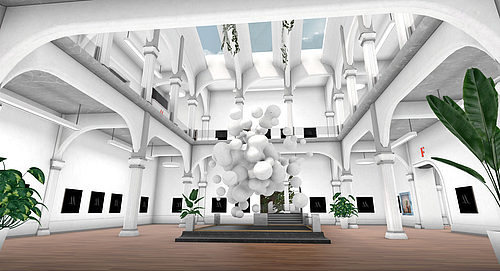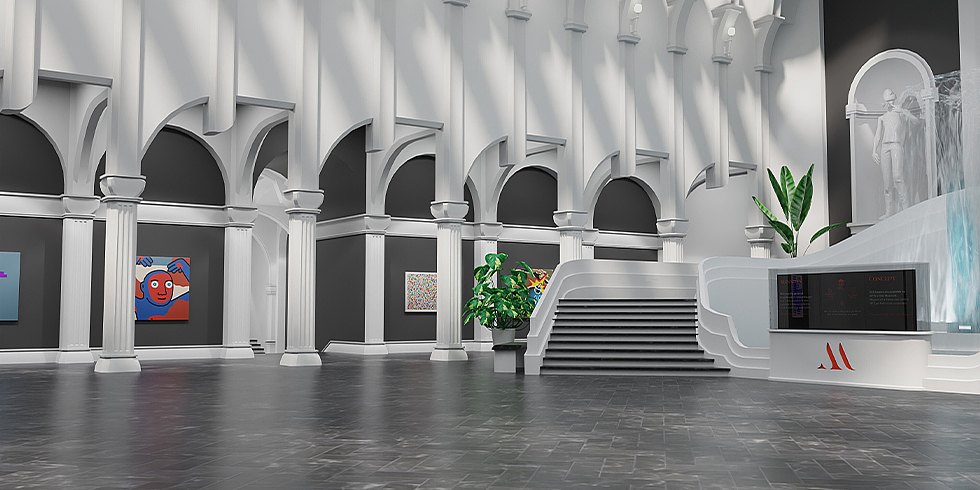Deep Dive #23: NFT – Sustainable solutions instead of hype
A buyer at a Christie’s action paid 69.3 million dollars (that is about 65.8 million Euros) in March 2021, for the digital collage by Mike Winkelmann, alias Beeple, the digital artist. And although other artists may only dream about this, it clearly shows: NFTs are setting the trend. The creative sector above all is happy about this. It is finally possible for artists and creative individuals to protect their works. Contrary to fungible tokens, NFTs cannot be exchanged and are therefore protected from being copied and destructed. In addition, creative people achieve a higher and thus a fairer share in profits when their works are sold, as with every sold piece the asset transfer is also recorded in the blockchain. This ensures that the creator receives a percentage of the purchase price with any further selling of the NFT.
Good for the artists, bad for the environment?
There is however a catch: Whoever purchases an NFT, needs a crypto-currency and that is based on a blockchain which is said to have a significant CO2-balance. In 2018 Digiconomist has calculated that the annual power consumption of Bitcoin is equal to the overall annual energy consumption of Ireland. Another study is said to have established that the energy consumption of the Bitcoin blockchain of China exceeds the combined overall annual greenhouse emissions of the Czech Republic and Qatar. There are also calculations for NFTs that do not look too good for the environment. The best known investigation may be that of the digital artist Memo Akten. Based on 18,000 NFTs he found out that the CO2-footprint of a typical NFT is the equivalent of the monthly energy consumption of an average EU-citizen.
There is more than one reason for this huge footprint – in other words it is owed to the many transactions. For one NFT several transactions are needed, from setting up via offering to the selling process and transfer of property. And all these depend on energy. The more transactions take place, the higher the power consumption. If they do not come from renewable energy sources, any quantity of harmful CO2 is released into the air:
| CO2-consumption and transaction | is the equivalent to |
| 100 kg CO2, to set up a digital work of art | 1-2 hours by plane, e.g. from London to Frankfurt |
| 200+ kg CO2 for the purchase with some offers | 3 hours by plane, e.g. from London to Rome |
| 500+ kg CO2 for several offers and several sales | Flight of more than five hours, e.g. from New York to Los Angeles* |
(https://memoakten.medium.com/the-unreasonable-ecological-cost-of-cryptoart-2221d3eb2053)
“The problem is much more complicated“

Calculations such as these are mainly based on NFTs that are saved on the Ethereum Blockchain. This has become the standard market place for Non-Fungible Tokens. In order to check the legitimacy of transactions and to save data, Ethereum uses a mechanism called “Proof of Work” (PoW). Regarding this mechanism, participants of the network, the Miners, have to fulfil a specific task. The fastest may attach the relevant block to the blockchain and is subsequently rewarded with the relevant crypto-currency, the coin. This PoW – mechanism is complex, causing the network and thus also the NFTs to consume an incredibly high amount of power. As most of the NFTs but not all are based on Ethereum, they are not all equally hazardous for the environment. “It depends on the blockchain that they are using and also on how many transactions are carried out. The problem is much more complicated than the statement that all is just too terrible”, explains Susanne Köhler, a researcher of blockchain sustainability at the Universität Aalborg in Denmark, to energiewirtschaft.io. Accordingly, PoW blockchains are increasingly more run with renewable energies. Today 39 per cent come from green sources such as wind or sunlight, as a Cambridge University study revealed. Fact is however: “The impact on the environment of Proof-of-Work-Blockchains is enormous”, says Köhler. “It is estimated that Bitcoin-Mining alone currently consumes as much energy as all computer centres in the world combined.”
Low-energy alternatives
But the industry has already worked on solutions: The Proof-of-Stake-Mechanism (PoS) being used by blockchains such as Tezos, Solana, Avalanche, and Cardano for example consumes a lot less energy. Along these lines Tezos has an estimated annual energy consumption of 0.00006 TWh compared to Ethereum with 33.57 TWh. As opposed to PoW the validation of transaction is not done by miners but by so-called validators. The more capital you deposit (Stake), the more realistic it becomes that you can attach a block. The concept presents a lower challenge to the hardware and thus consumes less energy. Another possibility is the Delegated-Proof-of-Stake (DPoS) also based on consent. Here users vote for delegates in order to validate the next block in a blockchain. To do this they gather all monies in a ‘Staking-Pool’ which in turn is linked with that particular delegate whom they have voted for. The Block.One engineers are totally convinced of this mechanism with their Open-Source-Protocol EOS IO. It is said to be an efficient and at the same time a low-energy way to operate a blockchain: In this way not only 3,996 transactions per second can be carried out – compared to 15 per second on Bitcoin and Ethereum – this is 66,454 times more energy efficient than Bitcoin and by more than 17,236 times more efficient than Ethereum, according to calculations made by Genereos and Digiconomist. In addition all emissions are mutually balanced with ClimateCare in an offset-procedure. And therefore, EOS can justifiably state that they are “the first blockchain worldwide with CO2-neutral servers”. NFT-market leader Ethereum has not yet progressed that far but a change-over to the PoS-mechanism is planned to be implemented in June 2022. This change to “Ethereum 2.0.“ could reduce NFT’s energy consumption by 99 per cent, according to experts.
For those who can’t wait, the NFT-market place and production studio snark.art has been available since 2018, where digital works can be set up on the environmentally friendly Tezos blockchain. The Berlin artist 3Dfraction for example used this option recently in “Stop the War“ to demonstrate the tragedy of wars such as the Russian invasion of Ukraine. And he is not the only one to draw attention to social grievances or to promote sustainable projects by using NFTs. The World Wildlife Fund for Nature (WWF) has been publishing their own crypto-art in shape of “Non-Fungible Animals (NFA)“ since November 2, 2021. Here, ten selected artists present ten works of art that were inspired by ten severely endangered species. However, the campaign was short-lived: the resentment of those who consider NFTs to be harmful to the environment was too great. Wrongly so. Because the WWF CryptoArt is based on the Polygon solution, which uses "sidechains" (layer 2) running in parallel to Ethereum and consumes only 1 per cent of the CO2 emissions of an Ethereum transaction. In addition, Polygon runs on PoS from the start.
Aspects: Environmental compatibility, price and speed

The NFT-solution of the Berlin start-up license.rocks goes for Polygon – for several reasons: “I heard artists say that they want a sustainable ecological solution“, explains Daud Zulfacar, Managing Director, responsible for Product & Vision. “At a Hackathon in 2019 we also looked into the ecological and social impact as well as the SDG goals and discussed which of the environmentally damaging aspects could be removed from the construction. We focussed very fast on Polygon as there were only a few offers available at the time.” The environmental compatibility is only one of the aspects for making a decision, the others are price and speed as it is often too expensive to set up NFTs on Ethereum: “But in Germany we are not prepared to pay several hundred Euros for NFTs“, says Zulfacar, who, in cooperation with his license.rocks-colleagues provided the opportunity for musicians and artists in “Collective Berlin“ to set up and sell NFT tokens mutually. “Polygon is an auxiliary means to produce NFTs cost-effective and environmentally friendly.“ This could become even more climate-friendly soon. A short while ago, the Polygon network invested 20 million Dollar to become CO2-neutral by offsetting, as early as 2022. Environmentally-conscious artists that are supported by license.rocks with workshops on NFTs will be glad to hear this as they will be about the other plans by this start-up: Together with Picanova - the world market leader in the section of individualised wall decorations and interior products, who has recently joined license.rocks – it is planning a platform enabling artists and designers to offer individualised print products linked with unique NFT-collections such as all decorations, clothes, and accessories. This platform is to link the On-Chain with Off-Chain world.
NFT enters the museum space

Other NFT projects in Berlin are equally exciting. One of these opened its doors end of 2021 with a temporary Urban Art & Culture exhibition GO! NFT : More than 80 artists from the areas of Graffiti, Tape Art, Installation, Mapping and Augmented Reality took part. Amongst them was a crypto-art based on blockchain that was available as NFT (Non-Fungible Token). Arrived to stay (Gekommen, um zu bleiben) is the motto of the worldwide first decentralised NFT museum Musee Dezentral in the Metaverse (Anm. Link zu DD dazu). “Our vision is the way art is presented on the blockchain which will revolutionise the exchange between creators of art and art collectors – without limits and completely free from any restrictions of the physical space“, explains Frank Hahn, CEO of the Berlin start-up RAVE.SPACE, who started this “matter of the heart“. “For this purpose we have developed a customised graphics engine enabling access from any end device, irrespective of whether it is a conventional smartphone or the latest VR-technology. We offer altogether 222 unique frames as NFT in various different exhibition halls and on various levels. Each frame allows the NFT-owner access to a space on the wall of the museum and the opportunity to exhibit their own NFTs. This means: Musee Dezentral is not curated by a central institution but by 222 (alternating) participants“. Everyone exhibits their own NFTs but the frame-NFTs are however minted as ERC-721-standard on the Ethereum Blockchain. In doing this, Hahn is hoping for the expected change to PoS “to counteract the enormous hunger for energy” as RAVE.SPACE are planning much more: Further museums are to be launched in Kosmos still this year.
“Generally speaking, the user case of NFTs has only just scratched the surface“, Hahn is convinced that the technology will distinctly simplify processes for example in the areas of real estate or the health sector. This would also offer opportunities for a number of Berlin enterprises using the blockchain technology. “However, we must be careful that we are not only copying the US hype but develop sustainable solutions”, adds Daud Zulfacar of license.rocks. Whatever is successful across the big pond is not guaranteed to work with us. One example would be the collection of baseball cards that can easily be transferred to digital units such as NFT, “it is a huge market in the U.S. as it affects a fifth of the male population”, says Zulfacar, “but we do not have this culture of collecting at all”. For him NFT is much more than just a pure value-enhancing jpg. It is like a container for all possible creative ideas that are developed depending on the usercase. “In addition, the blockchain represents an anchor of trust for me”, he says.
Trust, decentralisation, security and transparency – also regarding one’s own CO2 emissions – these properties of blockchain could be of advantage regarding sustainability. This sector will presumably achieve the objective the world is dreaming about much faster than others: to be Net Zero.

